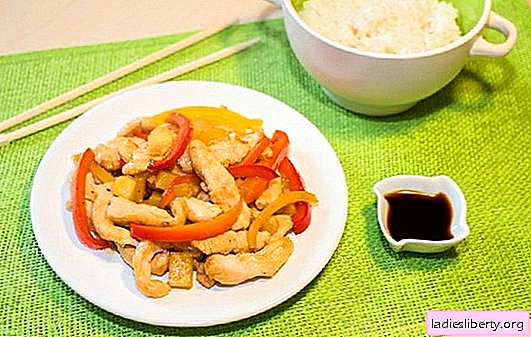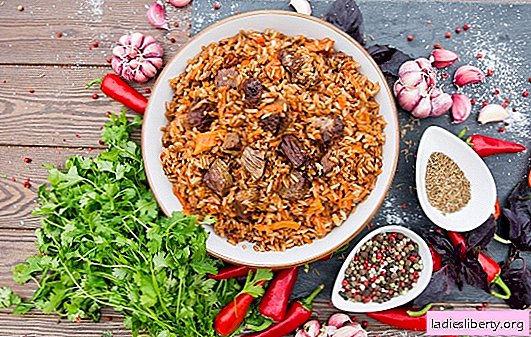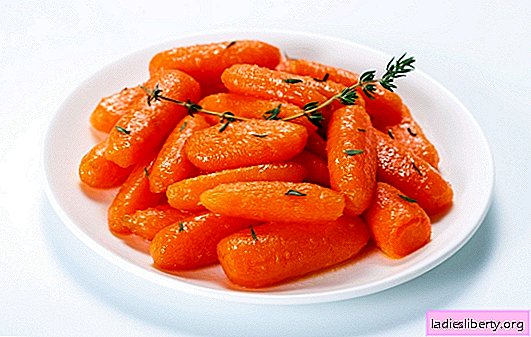
Karagana - general description
Karagana (Caragána, yellow acacia) - deciduous shrub or small tree of the legume family. Direct branched stems are leaf-like or bunch-shaped, have 2-10 pairs of leaves. The leaves are light green, paranoid, similar to a four-leaf clover.
The flower is bisexual, single or in bunches of 2-5 pieces, yellow or golden yellow. Fruits are beans, longer than the calyx; when the leaves are cracked, they twist. Flowering period is May. From multiple root offspring forms dense thickets.
Karagana - types and places of growth
More than 90 types of caragana are described. The most common tree-like, dwarf, maned, camel tail. This is a frost-resistant and drought-tolerant plant that perfectly adapts to urban conditions and grows along the banks of fresh water bodies. Dwarf caragana is an ornamental plant, planted in gardens and squares, the Altai Territory is considered its homeland. Many species are good honey plants.
Karagana - healing properties
This plant is used only in alternative medicine. Medicinal properties karagana are used to treat certain diseases - headache, heartburn, catarrh of the upper respiratory tract. Prevention of colds and viral infections, treatment of scrofula and aching pain in the joints, as well as arthritis and myisitis, liver diseases and atherosclerosis - these are the main areas of application of this plant. Honey obtained with this melliferous honey has extraordinary healing properties, helps with exhaustion and loss of strength, cough and vitamin deficiency.
Karagana - dosage forms
For medicinal purposes, use branches with buds not fully opened, flowers, honey collected from the plant. Raw materials are harvested during the year; flowers are harvested during the flowering period of the plant in May. The best medicine is considered to be raw materials collected in the spring, when the plant is more succulent. The ground part in the form of twigs and unopened flowers is dried in the shade. Yellow acacia can be grown in a pot and used for medicinal purposes: for washing wounds and replenishing vitamin C in the body. Also used alcohol tincture of the plant, decoctions and infusions of leaves, flowers, root and bark.
Karagana - recipes
- A decoction for treating colds, gastrointestinal diseases, inflammation of the female organs, gargling with sore throat, or oral cavity for gum disease: pour one tablespoon of notched dry bark into enameled dishes, pour 0.5 l of boiling water. Boil for 8-10 minutes, insist 2 hours, strain the hurricanes. Drink half a glass three times a day. External application combined with internal.
- Alcohol tincture of caragana for the treatment of rheumatism and arthritis: 200 g of dried twigs with flowers pour 0.5 l of vodka in a vessel of dark glass. Insist in the dark, in a cool place, for two weeks, stirring occasionally. Rubbed tincture and bandage the affected joints with warm woolen cloth. In case of severe pain, add as much fresh grated horseradish to the tincture in a ratio of 1/1. The procedure is preferably carried out before bedtime. To strengthen immunity, the same tincture is used internally, after mixing it with an infusion of herbs.
- Infusion for heartburn: 2 tablespoons of dry leaves pour boiling water in a teapot, insist on a caragane for 2 hours. Drink 2-3 tablespoons. The same infusion can be used to treat atherosclerosis within 2 months.
In addition, they prepare a decoction of carrageenas from twigs and flowers for washing wounds, rinsing the mouth and throat (in the treatment of purulent inflammation).
Karagana - contraindications
Contraindications to the use of this medicinal plant have not yet been identified.
Comments











